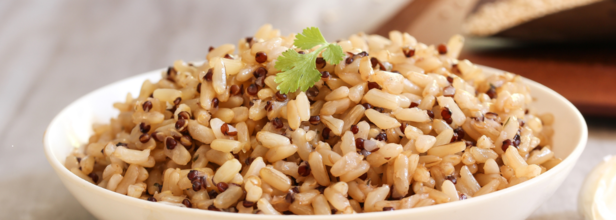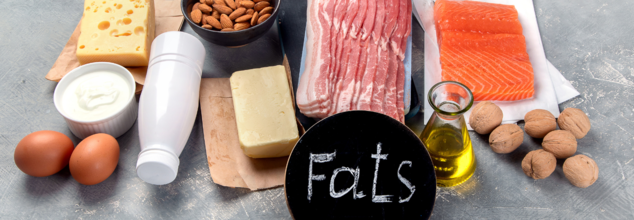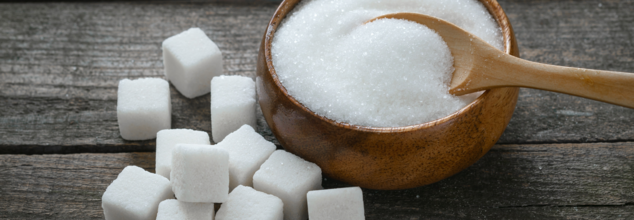
Credit: Canva
Two Potassium-Rich Foods That Could Lower Blood Pressure Better Than Cutting Salt
People living with high blood pressure are often encouraged to limit their daily salt intake to under 6g. But new findings suggest that merely cutting back on sodium may not be enough. Experts now recommend increasing dietary potassium—commonly found in bananas and broccoli—as a more impactful way to manage blood pressure levels.
Researchers at the University of Waterloo in Canada have developed a mathematical model that emphasizes the importance of the balance between potassium and sodium in the diet. Their findings indicate that raising the ratio of potassium to sodium may be more effective for blood pressure control than focusing solely on reducing salt.
“Usually, when we have high blood pressure, we are advised to eat less salt,” explained Dr Anita Layton, a professor of applied mathematics, computer science, pharmacy, and biology at the university. “Our research suggests that adding more potassium-rich foods to your diet, such as bananas or broccoli, might have a greater positive impact on your blood pressure than just cutting sodium.”
Excess salt in the diet can lead the body to retain water, which adds pressure to blood vessel walls and may eventually cause damage to organs such as the kidneys. While reducing salt is beneficial, potassium offers a counteracting effect by helping the body expel sodium through urine and relax blood vessel walls.
Both potassium and sodium are electrolytes—substances essential for regulating bodily functions such as nerve signaling, muscle contractions, and fluid balance. The model created by the Waterloo team shows how increasing potassium can restore a more favorable electrolyte balance, supporting healthy blood pressure regulation.
Study leader Melissa Stadt, a PhD candidate in Waterloo's Department of Applied Mathematics, highlighted that human diets have drastically changed over time. “Early humans ate lots of fruits and vegetables, and as a result, our body's regulatory systems may have evolved to work best with a high potassium, low sodium diet,” she said. "Today, western diets tend to be much higher in sodium and lower in potassium. That may explain why high blood pressure is found mainly in industrialised societies, not in isolated ones."
16 Million People In UK Have High Blood Pressure
Currently, around one-third of adults in the UK—an estimated 16 million people—are thought to have high blood pressure. Alarmingly, more than five million of them remain undiagnosed, putting them at greater risk for heart attacks, strokes, and kidney disease.
These new findings suggest that a shift in dietary focus could make a meaningful difference. Rather than concentrating solely on what to avoid, such as salt, patients may benefit even more by including potassium-rich foods like spinach, sweet potatoes, lentils, and avocados as part of their daily meals.
As research continues to uncover the intricate connections between diet and health, one thing is clear: the solution to high blood pressure may lie not just in subtraction but in smarter additions to our plates.

Credits: Canva
Is Brown Rice Really The Healthier Alternative?
When it comes to rice, many of us want to leave it but are unable to for it being staple to our diet. However, often, we have been told to switch to brown rice, for it is a better alternative, a healthier one than the white rice. It is less processed, rich in fiber, and packed with nutrients. However, a recent study from Michigan State University, published in the journal Risk Analysis, titled: Arsenic content and exposure in brown rice compared to white rice in the United States by Christian Kelly Scott and Felicia Wu, suggested that food safety also needs to be part of the conversation when it comes to brown rice. It is especially important when it comes to its arsenic levels.
What Did The Study Find?
Published in the journal Risk Analysis, the study found that brown rice contains more arsenic than white rice, especially in U.S. populations. Arsenic is a naturally occurring element found in soil and water, but it can be harmful when consumed in high amounts over time.
Researchers found that, on average, brown rice had higher levels of inorganic arsenic—a more toxic form—compared to white rice. This could pose potential health risks, particularly for children under the age of five.
Why Does Rice Contain Arsenic?
Rice is different from other grains because it absorbs more arsenic from the soil. That’s mainly because it’s often grown in flooded fields, where waterlogged soil allows arsenic to be taken up more easily by the plant.
Compared to other cereal grains, rice can take in nearly 10 times more arsenic. And since brown rice keeps its outer layers (which white rice loses during processing), it holds more of the arsenic absorbed from the environment.
Who Is Most at Risk?
The average adult probably doesn’t eat enough brown rice for arsenic to be a serious concern. But children, especially those under five, are more vulnerable. That’s because they tend to eat more food in proportion to their body weight.
Certain communities, like Asian immigrant populations and families dealing with food insecurity, may also face higher exposure if rice is a staple part of their daily diet.
Regional Differences in Arsenic Levels
The study also found that arsenic levels vary depending on where the rice is grown. In U.S.-grown rice, about 48% of arsenic in brown rice was the toxic inorganic kind, compared to 33% in white rice. In rice grown outside the U.S., those numbers were even higher—65% for brown rice and 53% for white.
Should You Stop Eating Brown Rice?
Not necessarily. The study’s lead author, Professor Felicia Wu, says the goal isn’t to scare people away from brown rice. It’s about understanding the trade-offs.
Brown rice has clear health benefits: it’s high in fiber, protein, and niacin. But food choices should consider both nutrition and safety. Wu emphasized that it would take very large amounts of brown rice eaten daily over many years for arsenic to pose a long-term health risk.
Looking Ahead
The U.S. Food and Drug Administration (FDA) is already working on setting safety limits for arsenic in food through its “Closer to Zero” initiative. This could lead to new guidelines that help people make more informed food choices.
Until then, balance is key. Switching between different grains—like oats, quinoa, or barley—can reduce overall arsenic intake while keeping meals healthy and diverse.

Credits: Canva
Healthy vs Unhealthy Fats: All That You Need To Know
For years, fat has been blamed for poor health. However, the truth is that you body needs fat. So, why do we hate fat so much? The key is actually in knowing which fat helps you and which ones harm.
So, here we have a guide for you that will help you understand the fats your body needs:
What Are Fats?
They are also called lipids. They are made of fatty acids and glycerol. They help your body make hormones, absorb nutrients, and keep cells healthy. The three main types of fats are:
- Saturated Fats: They are solid at room temperature and are found in things like butter or red meat.
- Unsaturated Fats: They are liquid at room temperature, mainly found in oils, nuts, and fish. They are also categorized as monounsaturated and polyunsaturated.
- Trans Fats: They are artificial fats which are found in processed foods. These are the most harmful fats and must be avoided.
Monounsaturated Fats (MUFAs)
They are heart healthy fats that can actually help you lower bad cholesterol. They are mainly found in olive oil, avocados, almonds, cashews, and peanuts. It helps lower the risk of heart disease, helps with a better blood sugar control, and reduces inflammation.
Polyunsaturated Fats (PUFAs)
These include the omega-3 and omega-6 fatty acids, which are essential for your body, but your body cannot make it on its own. These can be found in various sources. For omega-3 fatty acids, consume fatty fish like salmon or sardines, or you can have flaxseeds, chia seeds, and walnuts.
- Omega-6 fatty acids are found in vegetable oils like sunflower or safflower, and in soyabeans, seeds, and poultry.
- They can support brain function, fight inflammation, and keep your heart and skin healthy.
Which Fats Are Not That Great For You?
Trans Fats
These are artificial fats made to extend shelf life. They’re the worst type for your health.
Found in:
- Packaged snacks
- Fried fast food
- Some margarines and baked goods
- Raise bad cholesterol (LDL)
- Lower good cholesterol (HDL)
- Increased risk of heart disease and type 2 diabetes
Saturated Fats
These aren't as bad as once thought, but too much may still be risky for some people.Found in:
- Butter, cheese, ghee
- Red meat
- Coconut oil, palm oil
Tips:
- Replace with healthy fats when possible
- Try not to go overboard—moderation matters
- Dairy-based saturated fats may be less harmful than processed meats
Why Fats Matter
Brain Health – DHA (a type of omega-3) is key for memory and brain function.
Inflammation – Omega-3s calm it down; too much omega-6 or trans fat can make it worse.
Diabetes Risk – Healthy fats can improve insulin sensitivity and protect your heart.
How Different Diets Handle Fats
- Mediterranean Diet – Full of olive oil, fish, and nuts. A great example of healthy fat use.
- Keto Diet – High in fat, but quality matters. Choose good fats, skip processed meats.
- Vegan/Vegetarian Diets – Include plant-based fats like nuts, seeds, and avocados. Algae-based omega-3 supplements can help too.
What is important to understand is that fat is not your enemy. It is rather an essential part of your healthy diet. The importance is that you focus on the right kind of fat.

Credits: Canva
How Much Sugar Is Too Much Sugar?
Sugar is one of the most controversial ingredients in modern diets. Everyone is talking about it. How much to take? To consume it or not? How can one limit it? But sadly, it is everywhere. It is in your cereals, in your sauces and in your so called "health bars". However, it is important to understand that not all sugar is the same. The reality is different from blanket warnings. So, to make it easier for you, here is a break down of what sugar really is and how it affects your body.
What Is Sugar?
It is a carbohydrate that gives foods its sweet taste. It also exists in many forms, natural and as added ingredients.
Naturally occurring sugars include fructose which are present in fruits; lactose, which are present in dairy; maltose, which are present in sprouting grains; and glucose, which is body's go-to fuel and found in fruits, and is also created during digestion.
Whereas, added sugars are he one that comes after processing. They are called sucrose, or table sugar, high-fructose or corn syrup, honey agave nectar, maple syrup, and coconut sugar.
While your body ultimately breaks down all kinds of sugars into glucose or fructose, the source and accompanying nutrients, which could be fiber or fat may impact on how it is being absorbed in your body.
Why Too Much Sugar Could Be A Problem?
High sugar intake can lead to reduction in insulin sensitivity and also increase the risk of type 2 diabetes. It can also promote fat buildup in the liver. Sugary foods also lack fiber or protein, so you are more likely to overeat. It could also feed oral bacteria and contribute to cavities.
However, not all sugars are equally harmful.
How Much Sugar Can You Eat?
As per the World Health Organization (WHO), you must keep your sugar under 10% of your total calories. The ideal limit is 5%, which is around 6 tsp of sugar in total.
As per the American Heart Association, men can have 9 tsp of sugar, while women can have 6 tsp of sugar.
As per the US Dietary Guidelines, sugar must be kept under 10% of your daily calories, which is about 50g in a 2,000 calorie diet.
However, in reality, an average American consumes around 77g of sugar, way above the limit.
What All Has Added Sugar In It?
Added sugar isn’t just in desserts. It shows up in:
- Flavored yogurts (15–25g/serving)
- Pasta sauces (up to 12g/half-cup)
- Breakfast cereals and granola (10–15g/serving)
- Salad dressings and protein bars
To manage your intake:
- Read labels for “added sugars”
- Learn sugar’s many names (like dextrose or maltose)
- Choose whole, unprocessed foods
- Use cinnamon or fruit as natural sweeteners
What you must keep in mind is that one size does not fit all. Athletes may benefit from some quick-digesting sugars during or after exercise. Whereas children are more sensitive to sugar's effects and early eating habits. People with diabetes or metabolic conditions must also stay careful and monitor their sugar consumption.
Sugar isn’t evil—it’s context that matters. Focus on reducing added sugars, not cutting all sweet foods out. Occasional treats are fine if your overall diet is nutritious. By staying informed, you can enjoy sweetness without compromising your health.
© 2024 Bennett, Coleman & Company Limited

